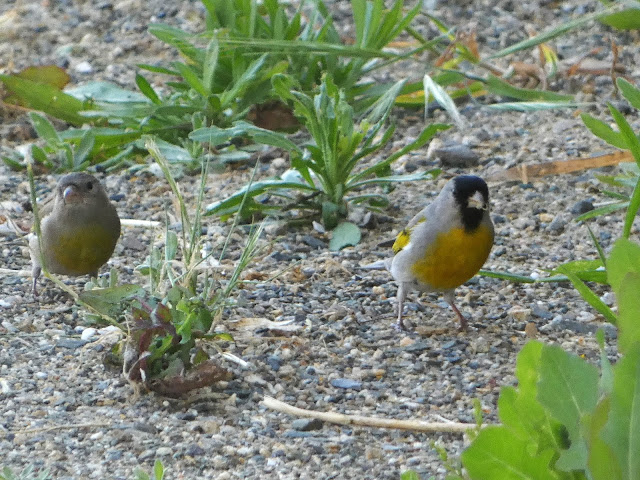Hearing deficiency is a pernicious impediment to someone who wants to be a productive birder. As most any birder will tell you, it is often the bird's song that is the first clue to finding and identifying a species, as most birds have good reasons to remain hidden in forest foliage and other habitats. Bird songs are also one of the most beautiful aspects to appreciating the environment that one is living in.
I've apparently lived all my life with a certain amount of hearing loss, especially at higher frequencies. I realized in my twenties that I could hear crickets in one ear but not the other. I suspect that hearing loss had other effects on my learning abilities, as I could not process words and language quickly and would quickly lose the thread of conversations and lectures if they were not accompanied by visual cues like subtitles (or more recently PowerPoint slides). I was hopeless at learning foreign languages, and I suspect the hearing disability was partly at fault (laziness may have been the other).
But birdwatching captured me. It started for geological reasons actually, when I was exploring the Hawaiian Islands. There are the volcanoes of course, but the stories of the native birds of Hawaii and their unique evolution caught my attention in a big way, and I started looking for the native birds with greater and greater interest. As a consequence, I began paying more attention to my unexpectedly diverse local species, and with the purchase of a camera with a high zoom, I was hooked.
It was frustrating at times. If I was birding with others, they would perhaps stop and say "there's a Downy Woodpecker singing", and I was clueless. I could hear many common birds, but hearing and identifying the rarer and more unusual birds was to me as incomprehensible as trying to listen to a conversation in Spanish or German.
Two things happened. The first was that after living for decades with undiagnosed hearing loss, I was tested and then fitted with some sophisticated hearing aids. As any audiologist will tell you, they don't entirely solve the problem of hearing loss, but they can help. Not by being louder, but by filtering out some extraneous noise so one can follow speech in noisy environments. It turns out that works well when trying to discern bird calls from the ambient sounds of the forest. My aural experience in natural settings was transformed.
The second was Cornell University's Merlin Sound ID app. I've been recording and reporting my bird observations on eBird for several years now, but didn't do much with the bird sound identifier. When I started hearing more bird species I came to realize that the sound app could be a great complement to a person with hearing loss. I cannot count the times that I left the bird app running while I walked a trail, and noticed that some interesting bird species were being recorded. I knew to start looking for them, even though I had not heard them for myself. I've been able to find and report new bird species as a result.
In June, I was using the Merlin app while listening for forest birds deep within Jedediah Smith Redwoods State Park in northernmost California. The app was listing the expected birds like robins and other thrushes, but then it started listing a Marbled Murrelet (Brachyramphus marmoratus) repeatedly. It made no sense to me, since my limited knowledge placed murrelets as shorebirds and we were miles inland. I was curious enough to look it up to find that the bird spends the day fishing along the coast, but then flies inland, sometimes many miles, to their nests in old-growth coastal forests. Their nests were not discovered by ornithologists until 1974!
That brings us to our bird of the day, the Blue Grosbeak (
Passerina caerulea). The Merlin app is of course not perfect, and may produce inaccurate results (I got a Northern Cardinal on the list the other day even though one has never been seen in the area). I have a personal rule that if the app gives me three repeated identifications of the same bird, I will start looking for it in earnest. And that is how I found the Blue Grosbeak on the Tuolumne River Parkway. It's only my third sighting this year of the species, and only the second on the Tuolumne, so it was a real thrill to capture its beauty on camera.
If there is a moral to this, it may be that if you have hearing loss, it can make a big difference in your life to have it checked. You may be missing far more than you realize.























